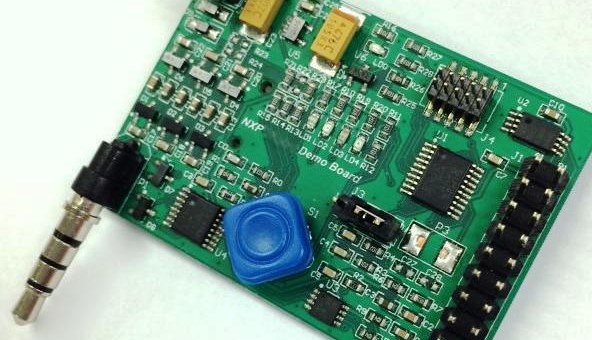Smartphone port? Try the Ear Hole
on

Smartphone peripheral developers are limited to RF links via Bluetooth, NFC or WiFi when they need to pass data back and forth to the device. This can add significantly to costs and stand-alone peripherals also need batteries or an adapter for power. The Quick-Jack from NXP solves both problems; it turns the standard 3.5 mm stereo audio headphone socket found on most iOS or Android smart devices into a self powered data port and provides an interface for external switches, sensors or any other external equipment.
The Smartphone Quick-Jack Solution comprises a small board, a free example app for popular smartphone OSs, and design documentation. The board houses:
- The LPC812 microcontroller to handle decoding/encoding of the Manchester algorithm (enabling use of the left audio channel for data transport) and communication with external peripherals
- Source code for the LPC812 is available free and is ready to use with NXP LPCXpresso tools.
- A standard extension header for easy connection of sensors, switches, HMI peripherals, or data- collection devices
- An energy harvesting circuit that draws power from the smartphone over the right audio channel to power the board and attached components
- An onboard miniature joystick to visualize data/signals and control the smartphone UI in the example application
In conjunction with the launch, NXP will host a competition whereby designers can submit ideas on what application they would create if they had a Quick-Jack board and enter a free drawing to win one of five boards to help their idea become a reality. The contest is now open and entries will be accepted until June 20, 2014.


Discussion (0 comments)